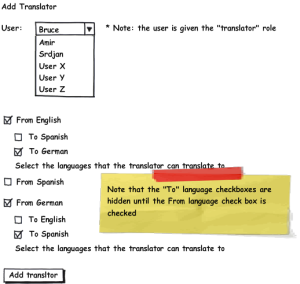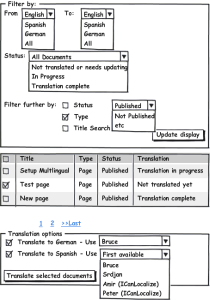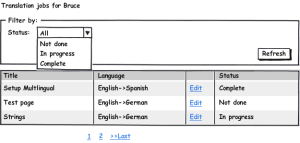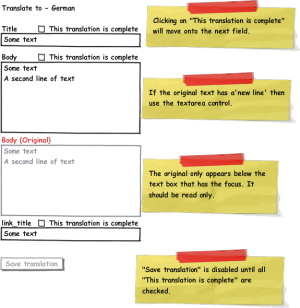 Support for Drupal 7 is ending on 5 January 2025—it’s time to migrate to Drupal 10! Learn about the many benefits of Drupal 10 and find migration tools in our resource center.
Support for Drupal 7 is ending on 5 January 2025—it’s time to migrate to Drupal 10! Learn about the many benefits of Drupal 10 and find migration tools in our resource center.The Translation Management module creates a systematic process for multilingual content management.
It creates a new Translator role. Each translator has a queue of jobs to complete. Translators do all their editing using a unified translation screen. There, they can translate anything, without having to know Drupal's multilingual system.
Content managers have a single Translation Dashboard. From that screen, they can view all documents that require translation and send to the translators.
Both translators and content managers can view the queue of pending translation jobs. They see the amount of pending work and completed work per translator or language pair.
Translators
First, you need to add translators. A translator would be a Drupal user with a special role, created by the module.
A translator role allows:
- Getting notifications about new jobs
- Access to the job queue (each translator has a separate queue)
- Translating using the unified translation screen
- Reviewing completed translations in the public pages
Translators have language pairs, which they can translate between.
The Translation Dashboard
The Translation Dashboard shows all the site's contents and allows sending to translation.
Content managers will see nodes, CCK, blocks and interface strings in the same screen. Then, they can choose what needs translation and send.
When sending to translation, content managers can choose a specific translator or leave it for the first available translator in that language pair.
Translation Queue
When there's a new job for a translator, the module will send a notification email.
The translator then goes to the translation queue and sees all pending jobs. From there, the translator can begin translating.
Translation Editor
Translators do all their edits in the translation editor. This screen allows translating everything, regardless of where it came from in Drupal.
The translation editor adapts to the type of content and will include the correct fields for translation.
Each field shows the original and the translation.
The module shows what needs translation in that job. It will highlight only fields that are new or modified. For modified fields, translators would also be able to see what's changed within the field, from the last time they translated.














